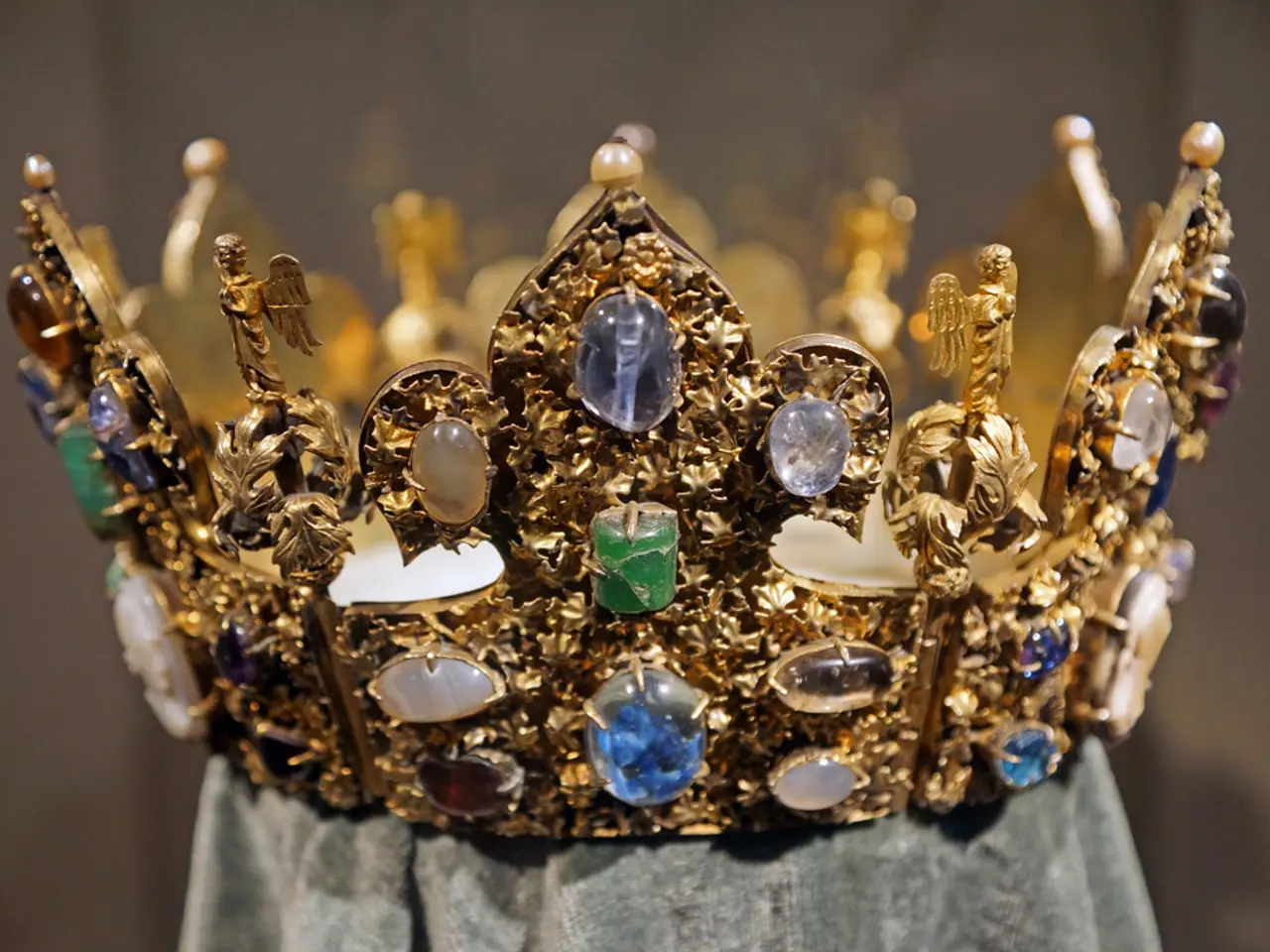Mineral: Kyanite, a distinct silicate mineral known for its striking colors, typically blue, green, or white, exhibiting strong physical properties.
In the world of gemstones, Kyanite stands out as a unique and captivating choice. Known for its varying hardness, distinctive pleochroism, and vibrant colours, this mineral is making waves in both the jewelry and spiritual sectors.
Kyanite, predominantly found in shades of blue, green, and black, is a pleochroic gemstone, displaying different colours when viewed from different angles. This mystical allure adds to its popularity, making it a sought-after choice in art and interior decor.
Historically, Kyanite has been highly valued for its healing and spiritual properties. In ancient times, it was often incorporated into rituals and ceremonies by shamans and spiritual leaders. Today, it is still prized for its ability to balance energy and facilitate better communication, making it a popular choice for enhancing the throat chakra.
Kyanite's physical properties are just as fascinating. It exhibits anisotropism, meaning its hardness varies with crystallographic direction. This dual hardness, ranging from about 4 to 4.5 on the Mohs scale along its long axis to 6 or 7 perpendicularly, makes identification easier.
Culturally and industrially, Kyanite holds significance beyond jewelry. Its stability at high temperatures leads to uses in manufacturing glass, burner tips, spark plugs, heating elements, electrical insulators, and ceramics. Although less commonly emphasized, Kyanite’s pleochroism and striking appearance give it value as a collector’s stone and in metaphysical contexts.
The value of Kyanite varies depending on factors like colour, clarity, and size. The blue variety is generally the most sought-after. Ethical sourcing is a critical consideration when purchasing Kyanite, with certifications and transparency in sourcing serving as indicators of ethical practices.
In some Native American cultures, Kyanite is considered a "bridge" stone that can facilitate the transfer of energy between individuals or realms. In ancient Greek mythology, Kyanite was believed to help in diplomatic missions, promoting clear and honest communication. Kyanite holds various symbolic meanings across different cultures, including a stone of alignment and balance, representing the harmonization of dualities.
Current trends in Kyanite jewelry lean towards minimalist designs that allow the natural beauty of the stone to shine. Bezel-set Kyanite pendants and simple Kyanite stud earrings are especially popular. Kyanite jewelry is best cleaned using a soft cloth, mild soap, and avoiding harsh chemicals and ultrasonic cleaners.
In art and home decor, Kyanite geodes, polished stones, and mosaic art pieces can serve as stunning centerpieces and bring in calming energies. Its enduring appeal lies in both its natural beauty and its unusual physical properties that set it apart from many other gemstones.
- In the realm of health-and-wellness, Kyanite's historical healing and spiritual properties are being rediscovered, making it a popular choice for enhancing mental health and energy balance.
- The science behind Kyanite's physical properties, such as pleochroism and anisotropism, has led to its use in various industries beyond jewelry, including in science and technology, like glass manufacturing and electrical insulators.
- In the fashion-and-beauty sector, Kyanite jewelry design is evolving, with minimalist, nature-inspired pieces becoming increasingly popular, reflecting the current lifestyle trends that prioritize simplicity and eco-friendliness.
- Education-and-self-development resources often feature Kyanite due to its symbolic meanings across cultures, such as representation of alignment and balance, serving as a tool for self-reflection and personal growth.




